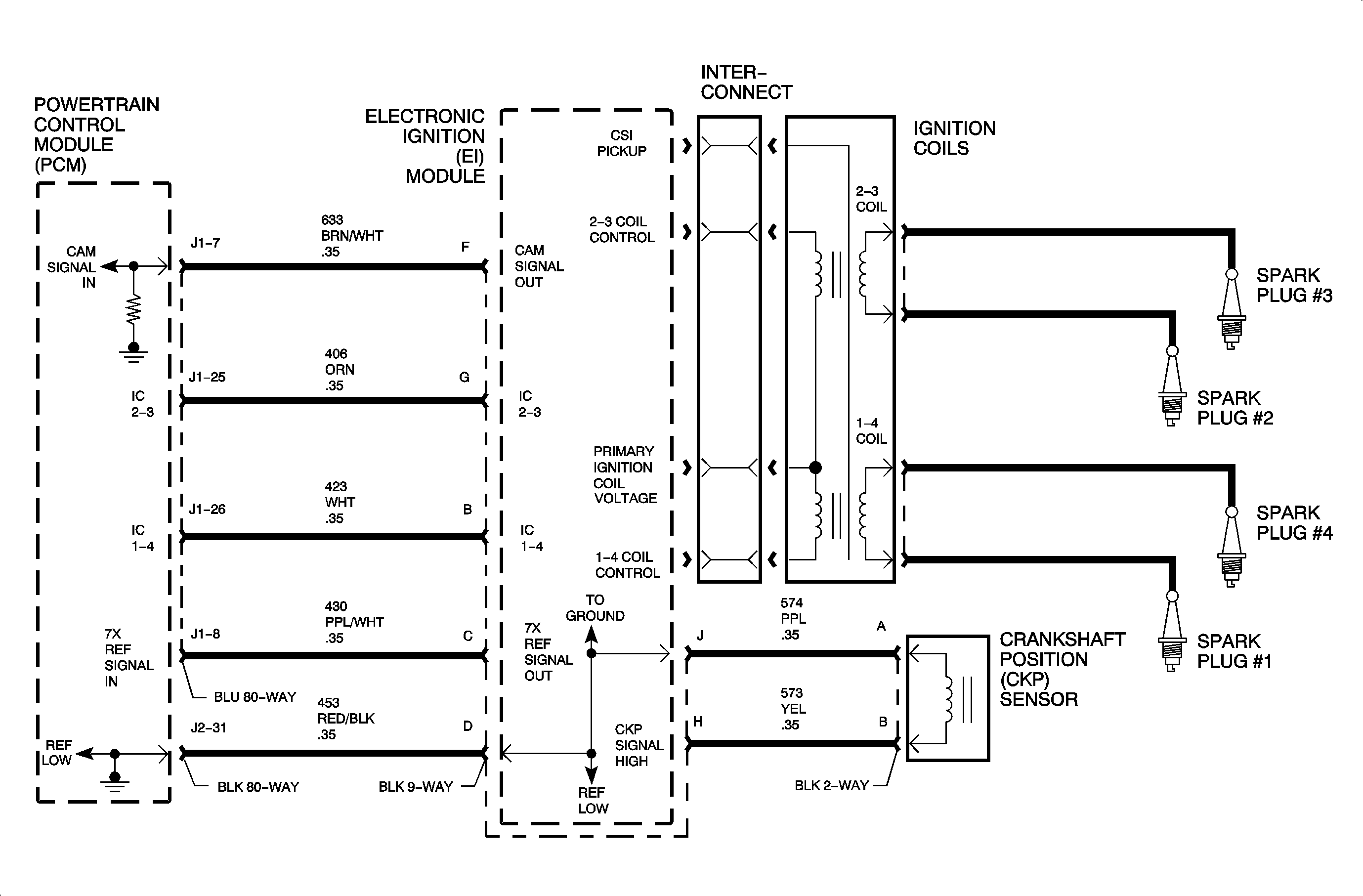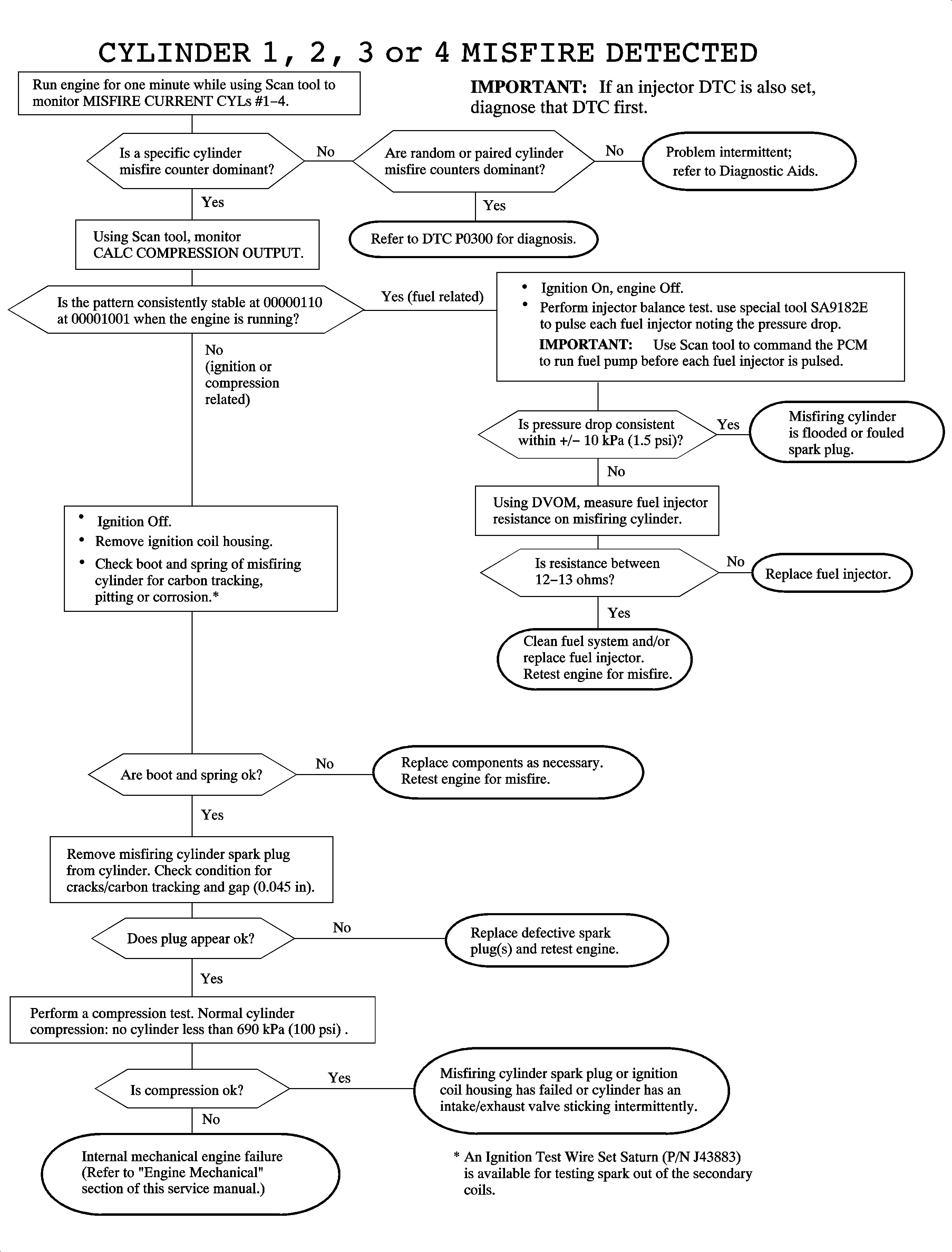
The PCM uses a 0-5 volt square wave from the EI module based off the crankshaft position sensor to determine the position and RPM of the engine at various degrees of crankshaft rotation. The PCM bases misfire diagnostics on the principle that crankshaft velocity will increase as each cylinder contributes its power input. Under certain conditions, the PCM will monitor crankshaft velocity variation in a series of 200 revolution tests. If 20-100 percent of the revolutions fail, a catalyst damaging misfire has occurred. If 2-19 percent of the revolutions fail, an emission related misfire has occurred. The MIL (SERVICE ENGINE SOON telltale) will flash when an active catalyst damaging misfire occurs on the first drive cycle if vehicle speed is above 48 km/h (30 mph) and MAP is greater than 70 kPa. The MIL will be ON steady if an emission related misfire occurs after 2 consecutive drive cycles. The MIL will turn OFF after 3 consecutive passed drive cycles meeting the same misfire criteria or 80 passed drive cycles if the criteria could not be met. DTC P0301, P0302, P0303, or P0304 sets when a specific cylinder misfire has occurred.
Conditions for Setting the DTC
DTC P0301, P0302, P0303, P0304 will set if specific cylinder misfires have been detected after a series of 200 revolution tests when:
| • | The sum of the misfire counts are based on engine speed and load. |
| • | The engine run time is greater than 5 seconds. |
| • | The engine speed is between 469-6,400 RPM. |
| • | The ECT is between -7°C to +123°C (20-253°F). |
| • | Ignition voltage is between 9-17 volts. |
| • | The fuel level is greater than 10 percent. |
| • | No CAM, CKP, ECT, fuel trim, IAT, idle speed, knock, MAP, O2S-1, TCC, TP, vehicle speed, P0601, P1336, or P1621 DTCs have been set. |
DTC P0301-P0304 diagnostics run continuously once the above conditions have been met.
DTC P0301-P0304 are type B DTCs.
Diagnostic Aids
Important: If a fuel injector DTC is set, diagnose that DTC first because it is most likely the cause of the misfire.
Important: The PCM will set a DTC P0300 first, even if a specific cylinder is misfiring. If a specific cylinder misfires for a certain length of time, a specific cylinder misfire will then set.
Important: If the vehicle has had prior replacement of a PCM or crankshaft, the crankshaft MUST be relearned. Perform the CRANKSHAFT POS. VARIATION LEARN procedure on the scan tool.
The misfire history counters will only store counts when the MIL is commanded ON.
The torque converter may be momentarily disabled to determine if the misfire is due to a rough road condition (auto).
Use the scan tool to monitor MISFIRE CURRENT CYL #1-4 while simulating different engine load conditions in the stall. The scan tool active misfire counter should pick up intermittent misfire conditions.
| • | The fuel injector resistance is 12-13 ohms at 23°C (74°F). |
| • | The spark plug gap is 0.045 in. |

